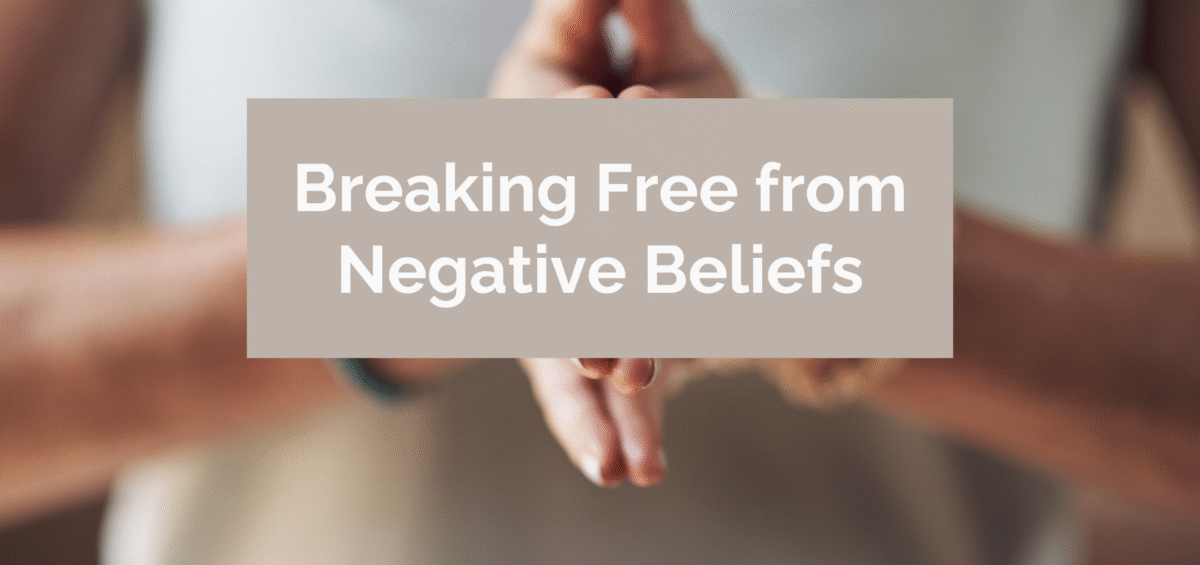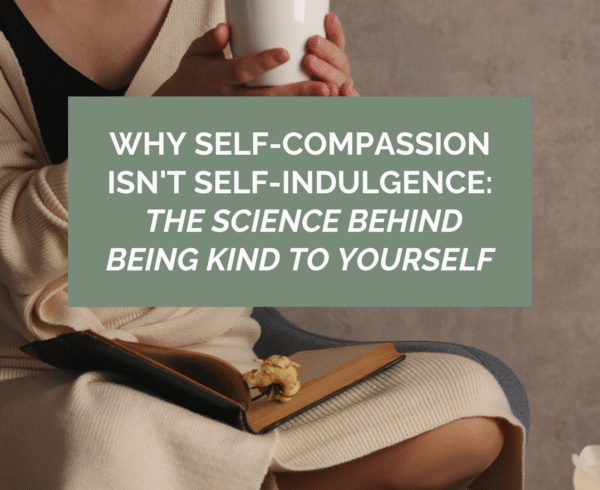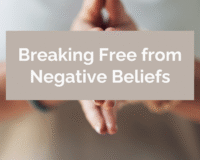Have you ever noticed that no matter how much you accomplish, there’s still a quiet inner voice whispering, “It’s not enough,” or “something’s wrong with me”?
That voice isn’t who you are – it’s a reflection of the beliefs you absorbed when you were younger. In psychology, we know that much of what shapes our emotional landscape begins early, through repeated experiences of being seen, loved, or dismissed. When those needs aren’t met consistently, our minds build beliefs about the self and the world to make sense of that pain.
Over time, these beliefs take root – not just as thoughts, but as sensations and energy patterns in the body. They can influence how we breathe, how safe we feel in relationships, and even how our nervous system responds to everyday stress.
Therapist and researcher Francine Shapiro (2001), creator of EMDR Therapy, described this as the memory network, a web of stored experiences that, when left unprocessed, continues to generate distressing emotions and limiting self-beliefs. These experiences stay “stuck” in both the body and mind until they are safely reprocessed.
In a therapeutic space, healing is viewed as an integrative process, one that involves not only the mind, but also the body, the breath, and the nervous system. Change doesn’t happen through thinking alone; it unfolds through awareness, embodiment, and compassion. Healing begins when we learn to listen to these signals with curiosity rather than shame.
So What Are Negative Beliefs?
Negative beliefs are not fleeting thoughts, they feel true in your core, even when your rational mind knows otherwise.
For example:
- A child constantly criticised may grow up believing, “I’m a failure.”
- Someone emotionally neglected might internalise, “I don’t matter.”
- A person raised around instability might carry, “It’s not safe to relax.”
These beliefs often activate your nervous system’s survival responses – fight, flight, freeze, or fawn – leading to patterns like people-pleasing, perfectionism, or emotional shutdown.
Psychologists refer to these long-standing emotional and cognitive patterns as Early Maladaptive Schemas (EMS) — deep, self-defeating structures that shape how we view ourselves, others, and the world (Young et al., 2003).
Schemas and Negative Core Beliefs: How They Relate
While “negative beliefs” are the cognitive expressions we can identify and verbalise, schemas are the broader, multidimensional frameworks beneath them.
A schema includes:
- Cognitive elements — the core beliefs and assumptions (e.g., “I’m unlovable,” “People will hurt me”).
- Emotional components — feelings like shame, fear, or sadness that give the schema emotional weight.
- Somatic patterns — bodily sensations linked to those emotions (tightness in the chest, heaviness, numbness).
- Behavioural responses — coping mechanisms that maintain the schema (avoidance, overcompensation, submission).
So, while a belief expresses what we think (“I’m not good enough”), the schema represents the entire system – how we feel, react, and relate through that belief.
In other words, negative beliefs live inside schemas — they are one facet of a larger pattern that combines thought, emotion, memory, and behaviour.
Example: Defectiveness/Shame Schema
- Negative Beliefs: “I’m broken,” “If people really knew me, they’d reject me.”
- Emotions: Shame, sadness, fear of exposure.
- Body sensations: Heaviness in the chest, tension in the stomach, urge to hide.
- Coping behaviours: Avoiding intimacy, striving for perfection, seeking external validation.
Recognising the schema helps us go deeper than changing a single thought — it allows us to heal the emotional roots that sustain that belief.
The Science of Change
Neuroscience shows that schemas and beliefs are sustained by repeated neural firing — “what fires together, wires together.” Fortunately, this also means the brain can rewire itself through new, healing experiences.
Therapies like EMDR, Schema Therapy, and Cognitive Behavioural Therapy (CBT) guide the brain to reprocess distressing experiences and link them to adaptive, empowering information. As memories are reprocessed, clients often find new beliefs emerging naturally, such as “I am safe now,” or “I am worthy of love.”
This process restores a sense of flow between mind and body, easing emotional tension and promoting deeper calm and connection.
Integrative Healing: Mind, Body & Energy
Healing negative beliefs and schemas involves both psychological insight and embodied regulation. You might work on:
- Breathwork — to calm the vagus nerve and regulate the nervous system.
- Grounding and mindful movement — to bring awareness back into the body.
- Mindfulness and compassion practices — to cultivate emotional safety and self-acceptance.
- Creative or sensory rituals — to reconnect with pleasure, intuition, and self-trust.
When the mind feels safe and the body feels anchored, new adaptive schemas — and new beliefs — can take root naturally.
Small Practices to Begin Rewriting Your Story
- Notice the story.
When a critical thought arises, pause and ask: “Is this truth, or an old belief resurfacing?” - Gather new evidence.
Keep a daily list of moments that disprove your old narrative. Your brain needs repetition to believe something new. - Flip the script.
Shift “I always fail” into “Sometimes I succeed, sometimes I learn.” - Reconnect with the body.
Breathe into your belly. Feel your feet. Let your body know it’s safe to relax. - Practice self-compassion.
These beliefs were formed to protect you. They were adaptive once — but you no longer need them to survive.
Negative beliefs are not fixed truths, they are stories written by pain, waiting to be rewritten by understanding.
Healing doesn’t mean erasing your past; it means learning to hold it with compassion while reclaiming your voice, your agency, and your peace.
You are not broken.
You are remembering your wholeness.
And you are allowed to believe something gentler, wiser, and truer about yourself.
In Health & Healing












Leave a Comment